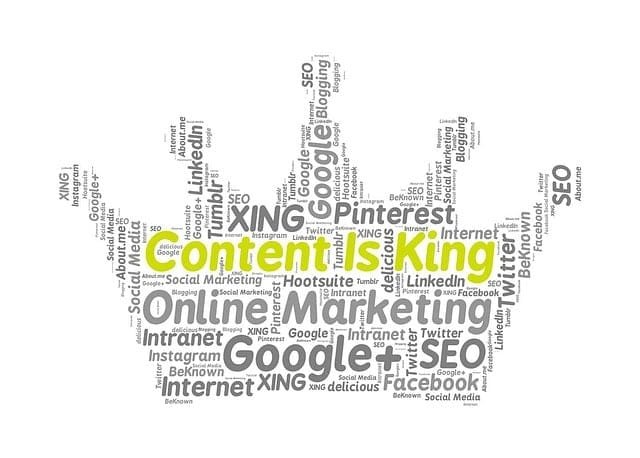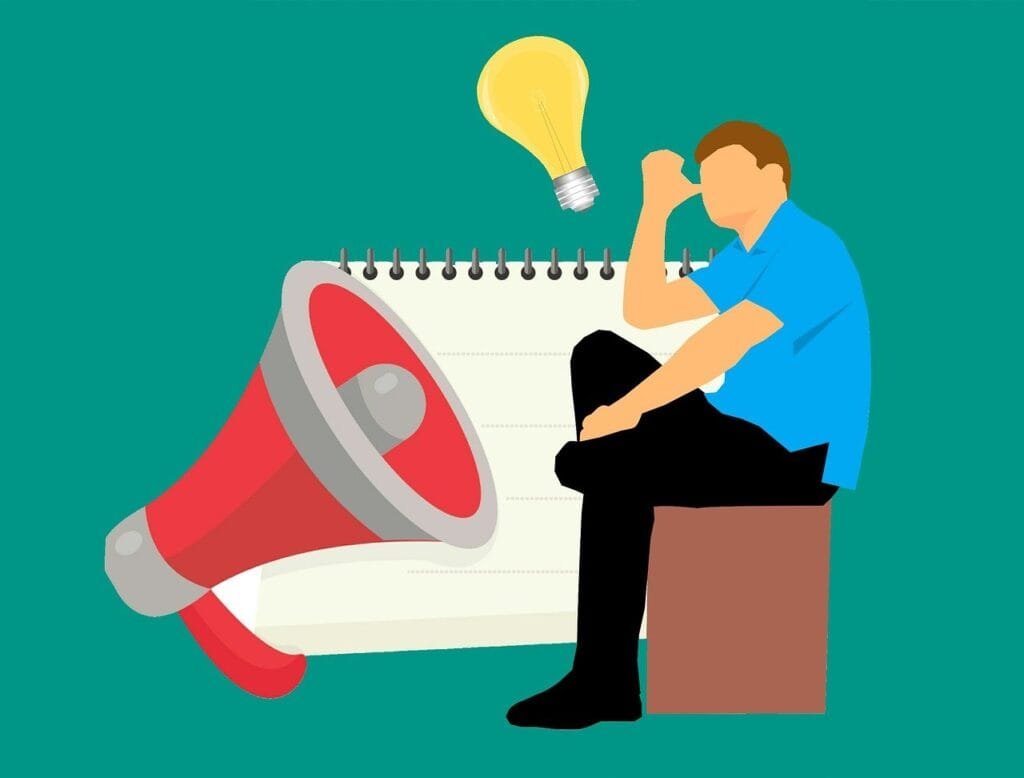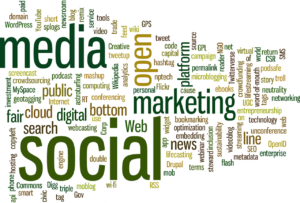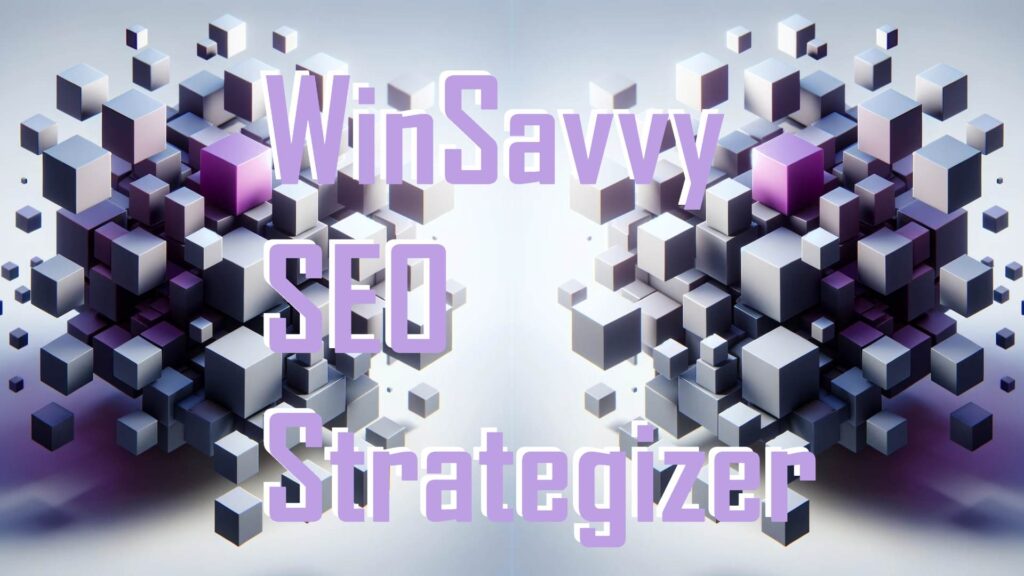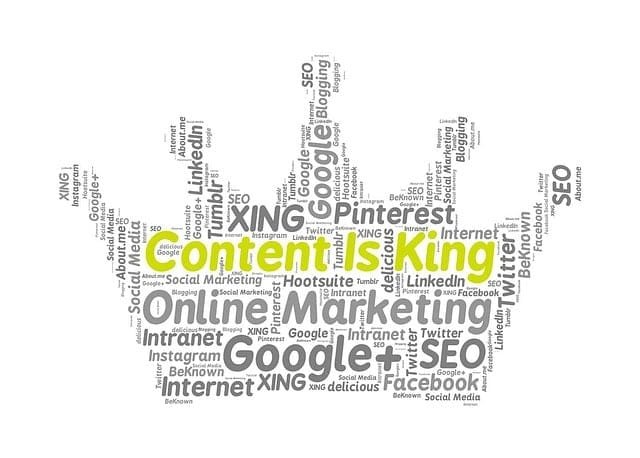This Article has been revised, edited and added to, by Poulomi Chakraborty.
- Comparing Content Marketing Strategies: Inbound vs. Outbound
- Creating Compelling Content: Strategies and Best Practices
- Optimizing Content for Different Stages of the Buyer’s Journey
- Leveraging Different Content Formats for SaaS Marketing
- Engaging Your Audience Through Personalization and Segmentation
- Building a Community: Fostering Engagement and Loyalty
- Conclusion
In the competitive landscape of Software as a Service (SaaS), content marketing has emerged as a crucial strategy for driving growth and retention. SaaS companies face unique challenges, such as long sales cycles, complex products, and a need to build trust with potential customers. Content marketing addresses these challenges by providing valuable, relevant information that educates prospects, nurtures leads, and keeps existing customers engaged.
Unlike traditional marketing methods, content marketing focuses on creating and distributing valuable content to attract and retain a clearly defined audience. This approach is particularly effective for SaaS companies, where understanding the product and its benefits often requires detailed explanations and continuous education.
In this article, we’ll explore how SaaS companies can leverage content marketing to drive growth and retention. We’ll delve into strategies for creating compelling content, optimizing it for search engines, and measuring its effectiveness. By understanding and implementing these tactics, SaaS companies can build stronger relationships with their audience, convert more leads into customers, and retain those customers for the long term.
Comparing Content Marketing Strategies: Inbound vs. Outbound

Inbound Marketing: Attracting Customers Naturally
Inbound marketing is a strategy that focuses on attracting customers through valuable content and interactions that are relevant and helpful, not interruptive. Inbound marketing techniques include blogging, social media marketing, search engine optimization (SEO), and content creation.
The goal is to create content that answers the questions and needs of your audience, drawing them naturally into your sales funnel.
For SaaS companies, inbound marketing is particularly effective because it allows you to build trust and authority over time. When potential customers encounter your content, whether through a Google search or a social media post, they start to see your brand as a reliable source of information.
This credibility can be crucial in industries where products are complex and require detailed understanding before purchase.
One of the key benefits of inbound marketing is that it aligns with the way modern consumers make purchasing decisions. Today’s buyers prefer to do their own research before contacting a sales representative.
By providing high-quality content that educates and informs, you can influence their decision-making process and guide them towards choosing your product.
Outbound Marketing: Reaching Out to Prospects
Outbound marketing, on the other hand, involves reaching out to potential customers through traditional advertising methods. This can include email campaigns, direct mail, telemarketing, and paid advertising. The focus is on pushing your message out to a broad audience, with the aim of capturing the interest of potential customers.
For SaaS companies, outbound marketing can still be effective, especially when targeting specific segments of your audience. For instance, a well-crafted email campaign can re-engage existing customers or nurture leads that have shown interest but have not yet converted.
Similarly, targeted paid ads can reach potential customers who might not have found your content through organic search.
However, outbound marketing often requires more investment and can sometimes be perceived as intrusive. The challenge is to make your outbound efforts as personalized and relevant as possible. This means leveraging data to tailor your messages to the specific needs and behaviors of your audience.
The Balance Between Inbound and Outbound
For many SaaS companies, the most effective approach is a balanced combination of both inbound and outbound marketing. Inbound marketing helps you attract and nurture leads organically, while outbound marketing allows you to actively reach out to prospects and re-engage with existing customers.
By integrating these strategies, you can create a comprehensive marketing plan that maximizes your reach and effectiveness. For example, you might use inbound marketing to build a library of valuable content that attracts organic traffic and nurtures leads through the sales funnel.
At the same time, you can use outbound techniques like targeted email campaigns to re-engage leads who have interacted with your content but have not yet converted.
The key is to ensure that both your inbound and outbound efforts are aligned and working towards the same goals. This means creating consistent messaging and using data to track and optimize your efforts across both channels.
Creating Compelling Content: Strategies and Best Practices

Understanding Your Audience
The foundation of any successful content marketing strategy is a deep understanding of your audience. For SaaS companies, this means knowing who your potential customers are, what challenges they face, and what information they need to make informed decisions. Creating detailed buyer personas can help you visualize and understand your audience better.
Start by gathering data from various sources, such as customer surveys, social media insights, and website analytics. Look for common traits and behaviors among your audience, such as their job roles, industries, and pain points.
This information will guide your content creation, ensuring that your content is relevant and valuable to your target audience.
Developing a Content Plan
A well-structured content plan is essential for maintaining consistency and focus in your content marketing efforts. Your content plan should outline the types of content you will create, the topics you will cover, and the schedule for publishing. It should also define the goals for each piece of content, such as generating leads, increasing engagement, or educating customers.
When developing your content plan, consider the different stages of the buyer’s journey: awareness, consideration, and decision. Create content that addresses the needs of your audience at each stage.
For example, blog posts and infographics can help raise awareness about industry challenges, while case studies and webinars can provide in-depth information during the consideration stage.
Crafting High-Quality Content
High-quality content is the cornerstone of effective content marketing. This means creating content that is not only informative but also engaging and easy to understand. Use clear, concise language and avoid jargon that might confuse your readers. The goal is to provide value and make complex information accessible.
Storytelling is a powerful tool in content creation. By framing your content within a compelling narrative, you can capture the attention of your audience and make your message more memorable. Use real-life examples, case studies, and customer testimonials to illustrate your points and make your content more relatable.
Visual elements can also enhance the quality of your content. Incorporate images, infographics, and videos to break up text and provide visual interest. These elements can help explain complex concepts more effectively and keep your audience engaged.
Optimizing for SEO
Search engine optimization (SEO) is critical for ensuring that your content reaches a wider audience. By optimizing your content for relevant keywords and phrases, you can improve your search engine rankings and attract more organic traffic.
Start by conducting keyword research to identify the terms your audience is searching for. Use tools like Google Keyword Planner or SEMrush to find keywords related to your industry and products. Incorporate these keywords naturally into your content, including in headings, subheadings, and throughout the body text.
Meta descriptions, alt text for images, and internal linking are also important for SEO. Write compelling meta descriptions that accurately summarize your content and encourage clicks. Use alt text to describe images, making your content more accessible and improving SEO. Internal links help guide readers to related content on your site, keeping them engaged and reducing bounce rates.
Promoting Your Content
Creating great content is only half the battle; you also need to promote it effectively. Share your content on social media platforms, email newsletters, and industry forums to increase its visibility. Engage with your audience by responding to comments and encouraging discussions.
Consider using paid promotion to amplify your reach. Social media ads, sponsored posts, and pay-per-click (PPC) campaigns can help drive traffic to your content. Target these ads to specific audience segments to ensure they reach the most relevant users.
Collaborating with influencers and industry partners can also boost your content’s reach. Partner with influencers who align with your brand and have a strong following in your industry. Guest blogging on reputable industry sites can also expose your content to a broader audience.
Measuring Content Effectiveness
To determine the success of your content marketing efforts, you need to track and measure key performance indicators (KPIs). Common KPIs for content marketing include website traffic, engagement metrics (such as likes, shares, and comments), lead generation, and conversion rates.
Use analytics tools like Google Analytics to monitor these metrics and gain insights into how your content is performing. Analyze which pieces of content are most effective in driving traffic, engagement, and conversions. Use this data to refine your content strategy and focus on creating more of what works.
Optimizing Content for Different Stages of the Buyer’s Journey

Awareness Stage: Capturing Attention
In the awareness stage, potential customers are just beginning to realize they have a problem or need. They are looking for information and insights to understand their situation better. Your content at this stage should aim to capture their attention and provide valuable information that educates and informs.
Create blog posts, infographics, and social media content that address common pain points and questions in your industry. Focus on broad topics that introduce key concepts and trends.
For instance, if your SaaS product is a project management tool, you might create content on the benefits of project management software, the challenges of managing remote teams, or tips for improving team productivity.
The goal is to position your brand as a helpful resource and thought leader in your industry. By providing valuable content without pushing a sales agenda, you build trust and credibility with your audience.
Consideration Stage: Nurturing Leads
Once potential customers are aware of their problem and have identified possible solutions, they enter the consideration stage. Here, they are evaluating different options and seeking more in-depth information to make an informed decision. Your content should help them compare solutions and understand how your product meets their needs.
Case studies, whitepapers, and webinars are effective content types for this stage. They provide detailed insights into how your product works and its benefits.
For example, a case study might showcase how a specific client used your software to overcome a challenge and achieve significant results. Webinars can offer live demonstrations and answer audience questions in real time, providing a deeper understanding of your product.
Comparison guides and detailed product pages are also valuable. These resources help potential customers weigh their options and see how your product stacks up against competitors. Providing transparent and honest information can build trust and persuade leads that your solution is the best fit for their needs.
Decision Stage: Converting Leads into Customers
In the decision stage, potential customers are ready to make a purchase decision. They need final reassurance that they are making the right choice. Your content should address any remaining objections and highlight the unique value of your product.
Customer testimonials, product demos, and free trials are highly effective at this stage. Testimonials from satisfied customers can provide social proof and alleviate concerns. Detailed product demos allow potential customers to see your software in action and understand its features and benefits. Offering a free trial or a demo version can give them hands-on experience, making it easier for them to commit to a purchase.
At this stage, it’s also important to provide clear and compelling calls to action. Guide potential customers towards the next steps, whether it’s scheduling a demo, signing up for a free trial, or contacting your sales team for more information.
Retention Stage: Keeping Customers Engaged
Content marketing doesn’t end once a lead becomes a customer. Retention is crucial for SaaS companies, as retaining customers can significantly boost revenue and growth. Engaging and educating your customers with valuable content helps ensure they continue to see the benefits of your product and stay loyal to your brand.
Create onboarding materials, such as tutorials and guides, to help new customers get started with your software. Regularly update them with new features, tips, and best practices through newsletters, blog posts, and webinars.
Offering exclusive content, such as advanced training sessions or customer-only resources, can also enhance their experience and add value.
Engaging with your customers through surveys and feedback forms allows you to understand their needs and address any issues promptly. Use this feedback to improve your product and content strategy continually. Happy customers are more likely to become brand advocates, sharing their positive experiences and driving referrals.
Measuring Success at Each Stage
To optimize your content strategy, track the performance of your content at each stage of the buyer’s journey. Use metrics such as page views, time on page, and bounce rates to assess awareness stage content.
For consideration stage content, track engagement metrics like webinar attendance, whitepaper downloads, and case study views. For decision stage content, focus on conversion rates, demo requests, and trial sign-ups.
Use customer satisfaction surveys and retention rates to measure the effectiveness of your retention stage content. By analyzing these metrics, you can identify what works, what doesn’t, and continually refine your content strategy to drive better results at each stage of the buyer’s journey.

Leveraging Different Content Formats for SaaS Marketing
Blog Posts: Building Authority and SEO
Blog posts are a cornerstone of content marketing for SaaS companies. They offer a flexible format for sharing insights, addressing common questions, and providing valuable information to your audience. Regularly updated blogs can help improve your website’s SEO, driving organic traffic and establishing your brand as an authority in your industry.
When creating blog posts, focus on topics that are relevant to your audience’s needs and challenges. Use keyword research to identify the terms your potential customers are searching for and incorporate these keywords naturally into your content. Write in a clear, conversational tone that is easy to understand, and break up your text with headings, subheadings, and visuals to enhance readability.
Long-form blog posts, which are typically over 1,000 words, can provide in-depth information and attract more backlinks, boosting your SEO efforts. However, shorter posts that address specific questions or provide quick tips can also be effective. The key is to offer a mix of content that caters to different stages of the buyer’s journey.
Case Studies: Demonstrating Real-World Success
Case studies are powerful tools for showcasing the real-world benefits of your SaaS product. They provide detailed accounts of how your customers have used your software to overcome challenges and achieve significant results. By sharing these success stories, you can build credibility and demonstrate the value of your product.
When creating case studies, focus on a variety of industries and use cases to show the versatility of your software. Include specific metrics and data to quantify the impact of your product. Use quotes and testimonials from your customers to add authenticity and make the case study more relatable.
Structure your case study with a clear problem-solution-results format. Start by describing the customer’s challenge, then explain how your product provided a solution, and conclude with the results they achieved. This narrative approach makes the case study more engaging and easier to follow.
Whitepapers and eBooks: Providing In-Depth Knowledge
Whitepapers and eBooks are excellent for providing in-depth knowledge on complex topics. These long-form content pieces allow you to explore subjects in greater detail and offer valuable insights that can help your audience make informed decisions. They are particularly effective in the consideration stage, where potential customers are seeking detailed information to evaluate their options.
To create a successful whitepaper or eBook, start with thorough research. Gather data, statistics, and expert opinions to support your arguments. Organize your content into clear, logical sections and use visuals like charts, graphs, and infographics to illustrate key points.
Make your whitepapers and eBooks easy to access by offering them as downloadable resources on your website. Use lead capture forms to collect contact information from readers, enabling you to follow up with additional content and nurture them through the sales funnel.
Webinars and Videos: Engaging and Educating
Webinars and videos are highly engaging content formats that can effectively educate your audience about your SaaS product. They allow you to present complex information in a visual and interactive way, making it easier for your audience to understand and retain the information.
Webinars are ideal for live demonstrations, Q&A sessions, and in-depth discussions on industry topics. They offer a platform for real-time interaction with your audience, allowing you to address their questions and concerns directly. Record your webinars and make them available on-demand to reach a wider audience.
Videos can range from product demos and tutorials to customer testimonials and thought leadership content. They are versatile and can be shared across multiple platforms, including your website, social media, and email campaigns.
High-quality videos can significantly enhance your content marketing efforts by providing a dynamic and engaging way to showcase your product.
Infographics: Visualizing Data and Concepts
Infographics are a powerful way to visualize data and complex concepts. They can make information more digestible and engaging by presenting it in a visually appealing format. Infographics are highly shareable and can drive traffic to your website when shared on social media and other platforms.
To create effective infographics, start with a clear concept or data set that you want to illustrate. Use design tools to create visually appealing graphics that highlight key points and data. Keep your design clean and focused, avoiding clutter and excessive text.
Infographics can complement other content formats, such as blog posts and whitepapers, by summarizing key points and providing a quick visual reference. They can also stand alone as valuable content pieces that attract attention and encourage sharing.
Podcasts: Building a Loyal Audience
Podcasts are gaining popularity as a content format that allows you to reach and engage with your audience on a more personal level. They are particularly effective for sharing expert insights, industry news, and thought leadership content. Podcasts can help you build a loyal audience who regularly tunes in to hear your perspectives and advice.
When creating a podcast, choose topics that are relevant and interesting to your audience. Invite industry experts and thought leaders as guests to provide diverse viewpoints and add credibility. Keep your episodes consistent in terms of length and frequency to build a routine for your listeners.
Promote your podcast through your website, social media, and email newsletters to increase visibility and attract new listeners. Engage with your audience by encouraging feedback and questions, and consider using podcast transcripts to create additional content for your blog or website.
Engaging Your Audience Through Personalization and Segmentation

The Importance of Personalization
Personalization is a critical component of effective content marketing for SaaS companies. By tailoring your content to the individual preferences and behaviors of your audience, you can create more meaningful and engaging experiences. Personalization helps you stand out in a crowded market and builds stronger relationships with your audience.
Personalized content can take many forms, from personalized email campaigns to dynamic website content that changes based on user behavior. The key is to use data to understand your audience’s preferences, interests, and needs. By leveraging this data, you can deliver content that is highly relevant and valuable to each individual.
Using Data to Drive Personalization
To personalize your content effectively, start by gathering and analyzing data on your audience. This can include demographic information, behavioral data, and engagement metrics. Use tools like Google Analytics, CRM systems, and marketing automation platforms to collect and analyze this data.
Segment your audience based on key characteristics such as job role, industry, and stage in the buyer’s journey. For example, a project manager might have different content needs than a CEO, and a lead in the awareness stage might be looking for different information than someone in the decision stage.
Use this segmentation to tailor your content to each group. For example, you might create a series of email campaigns that deliver specific content to different segments based on their interests and behaviors. By delivering the right content to the right people at the right time, you can increase engagement and drive more conversions.
Dynamic Website Content
Dynamic website content is another powerful way to personalize your audience’s experience. By using data to understand your visitors’ behavior and preferences, you can create personalized experiences that increase engagement and conversions.
For example, you can use dynamic content to display different messages, offers, or product recommendations based on the visitor’s past behavior. If a visitor has previously shown interest in a specific feature of your software, you can highlight that feature on their next visit. Similarly, you can use dynamic content to show different calls to action based on the visitor’s stage in the buyer’s journey.
Implementing dynamic content requires a robust content management system (CMS) and marketing automation tools that can track user behavior and deliver personalized experiences. By leveraging these technologies, you can create a more engaging and relevant website experience for your visitors.
Personalized Email Campaigns
Email marketing is a powerful tool for personalization. By segmenting your email list and tailoring your messages to each segment, you can deliver highly relevant content that resonates with your audience.
Start by segmenting your email list based on key criteria such as job role, industry, and engagement level. Use this segmentation to create targeted email campaigns that address the specific needs and interests of each group. For example, you might send a series of onboarding emails to new customers, providing them with tips and resources to get started with your software.
Personalize your emails by using the recipient’s name and other personal details. Use dynamic content to show different messages or offers based on the recipient’s behavior and preferences. For example, if a recipient has recently visited your pricing page, you might send them an email with a special offer or a case study that highlights the ROI of your software.
Engaging with Interactive Content
Interactive content, such as quizzes, surveys, and calculators, can significantly enhance engagement by providing a personalized experience. Interactive content allows users to input their preferences or data and receive personalized results or recommendations.
For example, a SaaS company offering marketing automation software might create a quiz that helps users identify the best features for their needs. The quiz can provide personalized recommendations based on the user’s responses, making the content more relevant and valuable.
Surveys are another effective tool for personalization. By asking your audience for their feedback and preferences, you can gather valuable data that can inform your content strategy. Use this data to create content that addresses your audience’s needs and interests.
Measuring the Impact of Personalization
To assess the effectiveness of your personalization efforts, track key metrics such as engagement rates, conversion rates, and customer satisfaction. Use analytics tools to monitor how personalized content performs compared to non-personalized content.
Look for trends and patterns in your data to identify what types of personalization are most effective. For example, you might find that personalized email campaigns have higher open and click-through rates than generic campaigns. Use these insights to refine your personalization strategy and focus on the tactics that deliver the best results.
By continually analyzing and optimizing your personalization efforts, you can create more engaging and relevant experiences for your audience, driving growth and retention for your SaaS company.
Building a Community: Fostering Engagement and Loyalty

The Power of Community in SaaS
Building a community around your SaaS product can significantly enhance customer engagement, loyalty, and advocacy. A strong community provides a platform for customers to connect, share experiences, and support each other. It also allows you to foster deeper relationships with your audience, gain valuable insights, and create a sense of belonging.
A vibrant community can become a powerful marketing asset. Engaged community members are more likely to become brand advocates, sharing their positive experiences and recommending your product to others. This word-of-mouth marketing can drive organic growth and increase customer retention.
Creating a Community Platform
To build a successful community, start by choosing the right platform. This could be a dedicated forum on your website, a private social media group, or a community hosted on a third-party platform like Slack or Discord. The platform should be easily accessible to your audience and support the types of interactions you want to encourage.
Consider the specific needs and preferences of your audience when choosing a platform. For example, a professional community might prefer LinkedIn groups, while a more casual or technical audience might favor platforms like Reddit or Discord. Ensure that the platform you choose allows for easy communication, content sharing, and collaboration.
Engaging with Your Community
Active engagement is crucial for building a thriving community. Regularly participate in discussions, answer questions, and provide valuable insights. Show your community members that you value their contributions and are invested in their success. Your presence and engagement can set the tone for the community and encourage others to participate.
Host regular events and activities to keep your community engaged. This could include webinars, live Q&A sessions, AMAs (Ask Me Anything), or virtual meetups. These events provide opportunities for real-time interaction and deeper engagement. Promote these events through your content channels and encourage community members to participate.
Encouraging User-Generated Content
User-generated content (UGC) is a powerful way to build community and enhance engagement. Encourage your community members to share their own content, such as tips, success stories, tutorials, and feedback. UGC not only enriches the community but also provides authentic and relatable content that can inspire and inform other members.
Recognize and reward active community members who contribute valuable content. This could be through shout-outs, badges, or other forms of recognition. Highlighting UGC on your main content channels, such as your blog or social media, can also provide additional exposure and motivation for community members to contribute.
Providing Exclusive Content and Benefits
Offering exclusive content and benefits to your community members can enhance their sense of belonging and loyalty. This could include early access to new features, exclusive webinars, advanced training sessions, or special discounts. Providing unique value to your community members reinforces their commitment and encourages continued engagement.
Consider creating a tiered membership structure that offers different levels of access and benefits. This can incentivize members to become more active and engaged to unlock higher tiers of benefits. Ensure that the benefits you offer are genuinely valuable and relevant to your community members.
Gathering Feedback and Insights
Your community can be a valuable source of feedback and insights. Regularly ask for their opinions on new features, content ideas, and overall product experience. Use surveys, polls, and direct discussions to gather this feedback. This not only helps you improve your product and content strategy but also shows your community members that their input is valued.
Act on the feedback you receive and communicate any changes or improvements you make based on community input. Transparency and responsiveness build trust and strengthen the relationship between your brand and your community members.
Measuring Community Success
To measure the success of your community-building efforts, track key metrics such as member growth, engagement rates, and content contributions. Use analytics tools to monitor community activity and identify trends. Look for signs of healthy engagement, such as active discussions, frequent contributions, and positive interactions.
Regularly assess the impact of your community on broader business goals, such as customer retention, satisfaction, and advocacy. Analyze how community participation correlates with these metrics to understand the value your community brings to your business.
By fostering a strong and engaged community, you can create a loyal customer base that actively supports and promotes your SaaS product. This community-driven approach not only enhances customer retention but also drives organic growth through word-of-mouth marketing.
Conclusion
Content marketing is a powerful strategy for driving growth and retention in SaaS companies. By understanding your audience, creating compelling and valuable content, and leveraging various formats and personalization techniques, you can engage potential customers and nurture existing ones. Building a strong community around your product fosters loyalty and advocacy, turning customers into brand ambassadors.
The key to success lies in continuously analyzing and optimizing your efforts to meet the evolving needs of your audience. With a strategic approach to content marketing, SaaS companies can achieve sustained growth, increased customer satisfaction, and long-term retention. By providing consistent value and fostering meaningful connections, you can ensure that your content marketing efforts drive tangible results for your business.
Read Next:
- Digital Marketing for Events and Webinars: Maximizing Attendance and Engagement
- Digital Marketing for E-learning Platforms: Engaging and Retaining Learners
- The Role of Affiliate Marketing in a Comprehensive Digital Strategy
- Digital Marketing in the Age of Voice Search: Adapting to New User Behaviors
- The Role of Influencer Partnerships in Amplifying Digital Marketing Efforts



